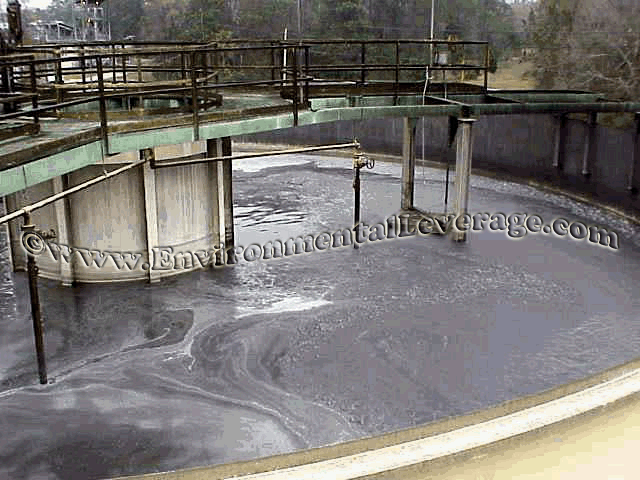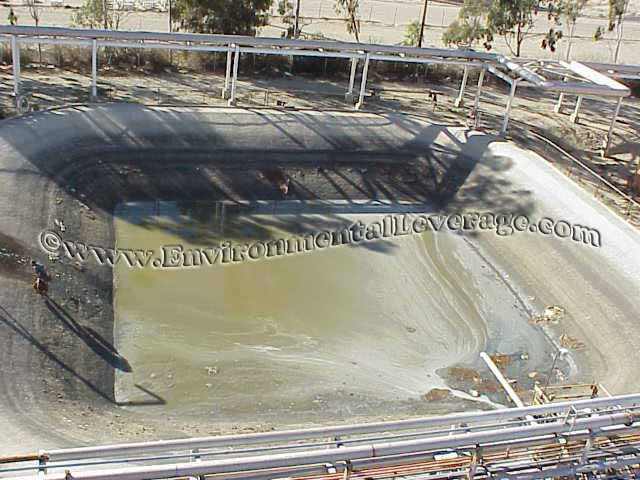Biological Products:
Bioaugmentation products for Wastewater applications in Papermills, Refineries, Chemical, Tanneries, Municipalities, Textiles, Steel, Agriculture, Animal feedlot, Gun Powder plant, Food and Beverage- Dairy Products, Orange Juice factory, Wineries, Cookie factory, Vegetable processing plant, Meat packing, Barbecue Restaurant, Aquaculture, Ornamental Ponds with algae , CAFO, Nursing homes, Military, Campgrounds, Universities, Regulatory agencies, River and Lake remediation
Lab Services:
Filamentous Identification Lab Service. One reason to identify filaments is to determine the filaments characteristics and then determine the type present. If the type is found out, a root cause can usually be associated with a particular filament. If the cause is known, then a correction can be made to alleviate problems. Chlorination is only a quick fix. Without process changes, filaments will grow back after chlorination. Wastewater Biomass Analyses and Cooling Tower Analyses also available
Training Materials:
Training is an integral part of any job. Not everyone is at the same level of training. Many people want beginning concepts and basics. Some need technical information or troubleshooting. Some want equipment, technology or process information. We have developed a full set of Basic training, Advanced training, Filamentous Identification the Easy Way as well as custom training CD's Manuals. We also provide hands-on training classes and soon will have an Online "E-University".
Audits and Consulting:
At Environmental Leverage® Inc., we have a team of experienced individuals who come into your plant with a fresh pair of eyes. The system is checked from influent to effluent. System optimization, equipment efficiency and operational excellence are key components explored. Key Benefits Equipment efficiency Total Cost of Operation reductions Reliability and safety An onsite audit is conducted to examine system parameters, process controls, and current monitor and control procedures. A physical walk-through is conducted, process flow diagrams are examined, previous design criteria are examined and current standard operating procedures are evaluated along with data logs.
|
Industry Troubleshooting-Equalization tanks and WetwellsLatest News!
What's New!
We have just added "Virtual Audits" to our capabilities. Check out our new Services. We are in the process of developing new courses for our ""Online E-University" in order to meet the needs of our global customers that cannot travel to our public classes.Visit our new website www.WastewaterElearning.com/Elearning
Equalization tanks and Wetwells
They can be above ground storage tanks, large lagoons, or covered sunken tanks.
The can have slow mixing, large aerators or nothing at all.
They can have covers, or be open to the air.
What your equipment is like is not the main issue, the real issues are what are you trying to accomplish with the Equalization and how well you are doing it.
Many plants, especially industrial facilities have large swings in influent loading. That may be either from BOD loading, pH or even toxicity. The purpose of an equalization holding area is to try to even out those swings before sending the wastewater on to the biological portion of the system. Anytime you make more than a 10% change to the bacteria, that technically is major to them and can cause upsets, i.e, equalization is a good thing.
While Equalization is a good thing, sometimes too much is not better. Many plants figure out that if a little is good, more is better. If you have just created a wide spot in the pipe, and are letting solids build up in the bottom of the holding tank, you can cause more problems than help.
Solids building up can cause septicity, growth of filaments, organic acids, gassing and sometimes even H2S generation. This can mean safety issues, excess electricity costs, excess polymer or chemical consumption and excess solids handling costs.
Visually inspect your tanks for gassing and ashing on the surface of the water.
Settling of solids and debris in equalization tanks or ponds cause a significant impact on oxygen demand in the biological system, not to mention odor control problems onsite.
Generation of septicity or organic acids can create a higher oxygen demand when introduced into the aeration basins or lagoons.
Solids can build up in any tank where this in insufficient mixing to keep the particles suspended.
When you finally take the tank down, you can see the solids that were resting on the bottom of the tank. These solids will turn anaerobic, cause gassing and ashing or the growth of filaments.
Equalization tanks are not sterile. There will be some biological activity. If you are holding influent anywhere for more than one to two hours, you will get changes in consistency in the oxygen levels, septicity if there is no oxygen as well as incur some biological activity. This in turn can cause the growth of filaments, odor problems and oxygen scavenging problems on the aeration basin when septic influent is introduced into the aeration basins.
No, this is not the hot springs at Old Faithful, but this equalization tank was bubbling enough to simulate it, with sulfur gasses coming off. H2S gases are not only problems for odor control, but can become a safety issue also.
Gas bubbles are easy to see on the surface, and instantly tell you facultative or anaerobic activity is going on in the holding tank, lagoons or EQ basins. How much and how often will tell you the depth of activity. More activity will occur with warmer temperatures than colder ones, due to the activity of the bacteria slowing down with colder temperatures.
Floating solids and debris usually indicate the presence of activity also.
Why does this matter? If you have designed your plant for X amount of BOD loading with 1.5X amount of lbs of O2 to handle the incoming BOD, you have just shortchanged your bacteria of oxygen. It may be 5-25% of your oxygen demand is due to septicity, depending upon your flow and just how septic you have loaded your plant.
|

 Equalization
tanks or holding, equalization lagoons come in all sizes and shapes.
They may be small or very large.
Equalization
tanks or holding, equalization lagoons come in all sizes and shapes.
They may be small or very large.
















